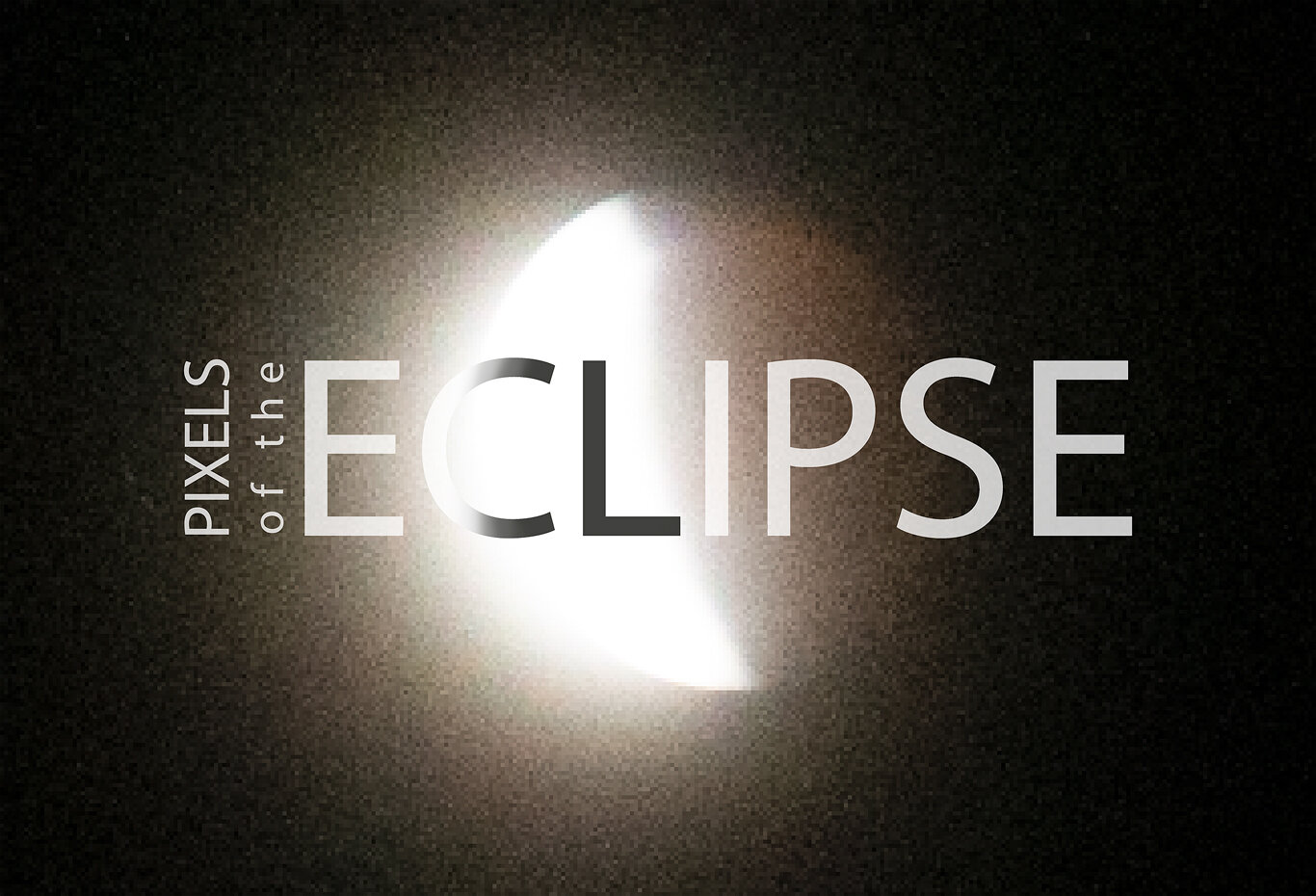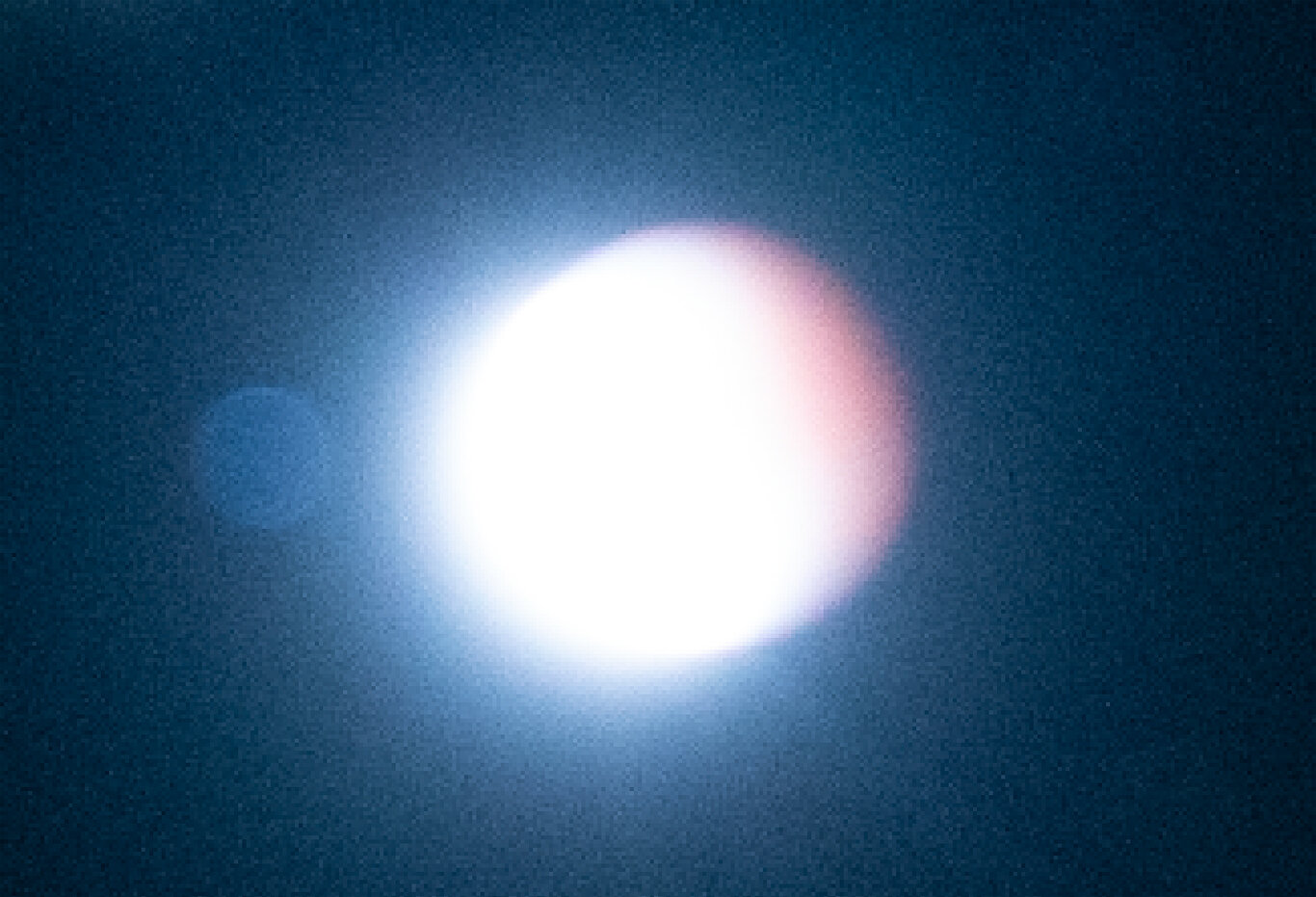26 May 2021, Total Lunar Eclipse (Blood Moon).
On May 26 2021, the earth was a participant in a total lunar eclipse, and blood moon. A great movement of planets made up of billions of tones of celestial matter, populated by billions of forms of life, aligned themselves in such a way as to impede the transmission of light from the sun to the surface of the moon.
in a total lunar eclipse, We lose all light, and enter the Darkest depths of night.
As a child my grandmother told me, “Ancient people believed the stars were gods, who lived in the universe. Even the moon and our own planet are gods”.
“Gods”, I said. “The whole planet?”
“Well, she’s a she, so a goddess actually.”
I hold up a camera to the skies trying to wrangle my dot-like moon into a perceivable object. But scale is a hard thing to capture, especially by a tiny person on the planet. Even with my lens, the eclipse is only a speck in the dark sky.“But, how can the earth be alive if I can’t see her?”, I said.
“Well not everything that is alive looks like a human. Think of your cat, she’s alive isn’t she?” I ponder on my nanna’s logic for a moment, trying to make sense of it in my child mind.
“Better yet, think of rock, or rivers, the stars and planets, even the entire universe”.
She continues, “Child, you need to see life in a different way.”
Reluctantly, I continue to take shoots over the next hours. I vaguely mark a spot on a pile of dirt to return to every 30 minutes so I can track the progress of the Eclipse. Usually I'm late, or early. My methodology is lazy. I forgo the use of a tripod, and increase the ISO to maximum, which generates an extremely pixelated image. I'm not certain my focus is targeted on the moon. Typically photographers would consider this technique, lazy, sloppy, lacking in technical skill and knowledge. Oh well, I've started now, I may as well continue until the end.The Eclipse keeps moving by, inch by inch across the sky, and I keep snapping my pictures according to the rules of my dodgy methodology. As time passes, I begin to review the images between each shoot and see something different. Bad photography turns into something else.I stop looking for resolution, and dynamic range or colour accuracy.And like the shifting of the Eclipse, my perception of the work transforms. I see a new vision. Material form and cosmic motion; light and darkness; a symbiotic universalism, emotion, and the movement of life, rise to my attention. Through the failure of the technology, my technical skills, and lazy methodology, a new meaning 'from' within the work emerges. A new way to view photography, a new way to experience a photograph. “A more transcendent way”, she said.
I pretend knowledge for a moment, then my curiosity gets the better of me and I ask, “ ‘Transcendent’, what does that mean?”…
I begin to imagine the image as a symbol of a segment of space and time; a moment of existence frozen through the tools of science and technology. Imperfect, certainly. But, aren't all images imperfect in one form or another? And isn't the purpose of an image to convey something far more important than resolution and dynamic range,...something like a meaning? But then, what does it mean to see an Eclipse?“To see beyond what your eyes show you.”
“To see life, in all of existence”.














